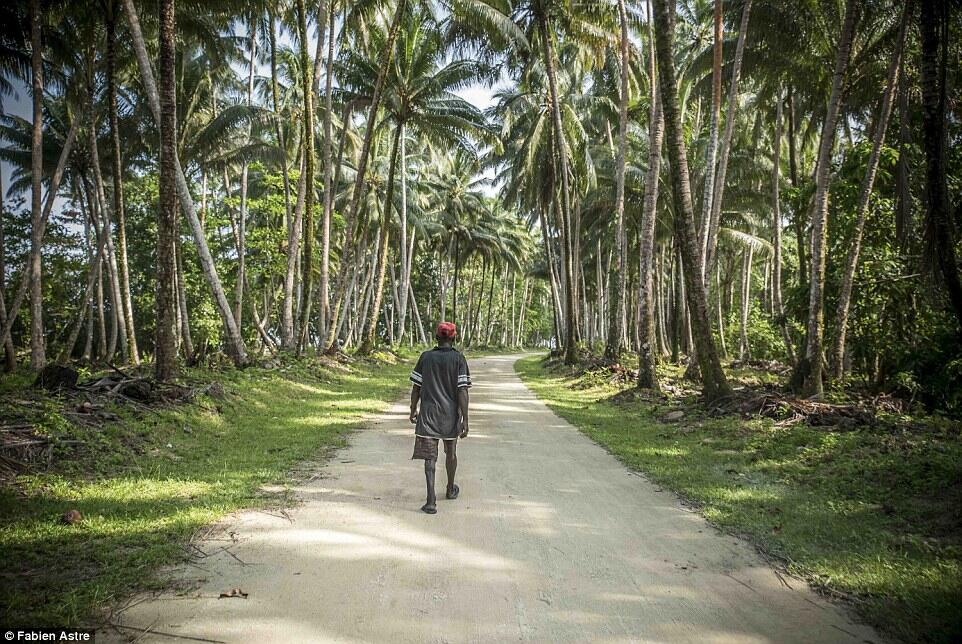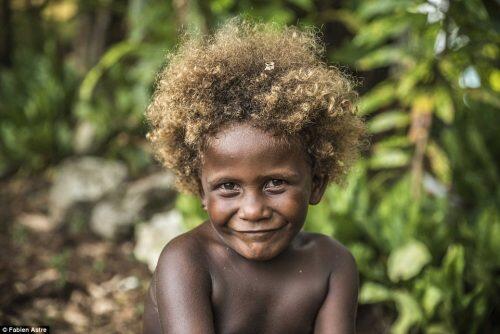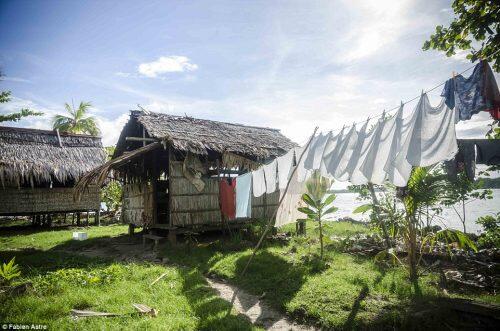Daily Mail has published beautiful photos of the Solomon Islands, which remained the same for thousands of years.
The locals still get around in the same dugout canoes as their ancestors, the moon is used as a calendar in rural areas – the days of the week meaning nothing – and the marine environment largely shapes the islanders’ fortunes, as it always has.
French photographer Fabien Astre, 32, spent a year documenting life on the Pacific islands, which lie just south of the equator, and his images reveal how truly magical and alluring they are.
French photographer Fabien Astre, 32, spent a year documenting life on the Solomon Islands, where residents travel in dugout canoes, a boat made from a hollowed tree trunk. Astre said: ‘Solomon Islanders make paddling a dugout look incredibly easy… but looks can be deceiving’
He said: ‘No matter which island you are on, of the 1,000 plus islands that make up the archipelago nation, you are guaranteed to feel worlds away from everything you’ve ever known.
Astre said: ‘The dark skin and blonde hair combination has puzzled scientists for years. While Solomon Islanders might tell you the blonde colour comes from sun exposure or a diet rich in fish, the truth is the islanders have their own unique “blonde hair” gene and it is a common sight in the area’
‘Despite the diversity of the population, over 70 languages are spoken, Solomon Islanders all continue to have one thing in common – the ocean sustains them.’
‘Most rural Solomon Islanders live in traditional homes which are made entirely from bush materials,’ said Astre. ‘Sago palm is used for the thatch roof while bamboo, pandanus, and different types of wood (including mangrove species) are used for the rest of the house. The cooking area is separate from the rest of the house’
Astre explored emerald-coloured lagoons, the island where John F Kennedy was stranded in World War II and vibrant marketplaces, where stall owners sometimes sleep next to their produce for a whole week. Here he tells a story, in pictures and words, of a place that’s truly timeless.
Astre said: ‘The Solomon Islands saw a lot of action between Japanese and American forces during WWII. The heavy history is still alive today, as relics, on land and in the sea, offer reminders of battles fought. Ships, planes and tanks, for example, are abundant and continue to be discovered. Kennedy Island [pictured], named after Lieutenant John F. Kennedy, is where Kennedy and his crew were stranded after their ship, the PT109, was struck by a Japanese destroyer during the early hours of August 2, 1943’
‘The islanders use the moon as a calendar in rural areas,’ said Astre, ‘with the days of the week meaning nothing. The marine environment largely shapes the islanders’ fortunes, as it always has.’ Pictured are Pikinini (young children) playing on an old car.
When Spanish explorer Álvaro de Mendaña de Neira found the Solomon Islands, he believed he had found the source of King Solomon’s wealth because he found signs of gold, Astre explained. Today the Solomon Islands’ treasure is the nearly 1,000 islands surrounded by beautiful reefs and lagoons
‘The local market is full of tropical fruit, vegetables and fish – all fresh and all organic,’ Astre said. ‘The villagers from neighbouring islands arrive each morning by boat to occupy their little stands under the shade of tall trees and sell their harvests. Those coming from further away may spend the whole week at the market sleeping next to their produce. Friday is the best market day. For most families, money earned here is the only source of income.
Playful teenagers keep cool in the water and enjoy their homemade platform, which floats just off shore.
Pictured is a Melanesian young girl. This term is given to the dominant inhabitants of Melanesia, which is made up of four countries -Vanuatu, Fiji, Papua New Guinea and the Solomon Islands
Gizo town, on Ghizo Island, is the capital of the Western Province, explained Astre. With a population of 6,154 (based on 2005 estimates), it is the second largest town in the country. In recent history Ghizo Island was settled by Gilbertese from Kiribati and Solomon Islanders from many different islands. Its population is therefore very diverse which makes resource ownership a complicated matter
Source: Daily Mail





















